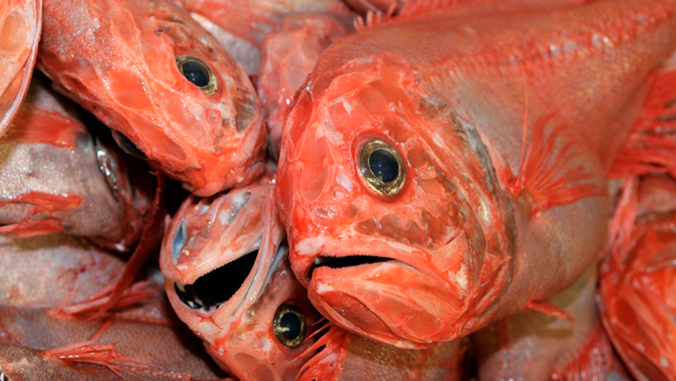
A new study, using data gathered by the Sea Around Us project to reconstruct the fish catch at global scale, reveals that in the past 60-plus years, the practice of towing giant fishing nets along the seafloor has caused the extraction of 25 million tons of fish that live 400 meters or more below sea level, leading to the collapse of many fish populations in a “boom and bust” pattern of exploitation.
The study, which highlights research done by University of Hawaiʻi at Mānoa Biology Professor Les Watling and colleagues, was published this week in Frontiers in Marine Science. It examines the historical catch by bottom trawlers around the world of 72 deep-sea fish species, many of which are exploited to unsustainable levels and several that are no longer commercially viable.
The new estimates suggest that 42 percent more fish have been caught by countries than they reported to the Food and Agriculture Organization of the United Nations.
Catch being underreported
“Our study shows that there is systematic underreporting of the real catch. This means that fisheries managers are making decisions based on incorrect data, which has dramatic consequences for marine ecosystems,” said Lissette Victorero, lead author of the paper and a PhD student at the National Oceanography Centre in the United Kingdom.
For example, roundnose grenadier estimated catches for the North Atlantic were greater than 60,000 tons in 2001, but the stock was overfished so fast that a moratorium had to be imposed in 2006.
“One of the reasons behind this collapse is the fact that trawls are not selective: They catch everything and anything, which means that young grenadiers that have not yet reached full reproductive development are caught along with adult grenadiers, decreasing the ability of the population to recover,”said Deng Palomares, co-author of the study and the Sea Around Us project manager at the University of British Columbia.
Watling explained that most of the fisheries analyzed followed a typical “boom and bust” cycle, lasting for less than a decade or two, because deep-sea fish generally have low fecundity, grow very slowly and are highly vulnerable to overexploitation. Deepwater fish also often live around seamounts and ridges that are left bare of life when fished by deep-sea bottom trawls.

Impact of immense trawling
Bottom trawling of deep fish depletes the stocks but does not generate much in the way of marketable fish. Immature individuals are thrown overboard because they generally don’t meet minimum size requirements, while non-targeted species caught as bycatch are also returned dead to the sea.
The new estimates suggest that six million tons of fish were discarded over the study period while deep-sea fisheries only contributed 0.5 percent of total fisheries landings. “This means that globally their economic importance is trivial,” the paper states.
The need to keep the business going despite its financial unviability drives fleets to continuously look for public subsidies and new species to fish, particularly once they have fished out a stock or are subjected to new regulations.
“So what we are seeing is a cycle in which trawlers start targeting fish that they were already dragging up as bycatch. They create new markets for them until they also exhaust that stock with regulations lagging behind,” Victorero explained.
The impact of trawling goes beyond the capture of fish populations. As they are dragged on the seabed, trawls remove sponges, corals, sea stars, sea cucumbers and anemones, all of which play important roles as food source or habitat for fish. They destroy seamount communities and other fish homes, turning former thriving habitats into large cleared areas.
The massive under-reporting of catch “means that much more biomass of fish and habitat-forming species have been removed from the deep sea than we thought. This has altered the ecosystem in ways that we have yet to understand,” Palomares said.

